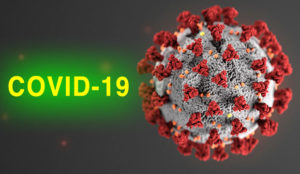You can reduce the story of CRM to a lot of things, especially its many component parts. Social networking, cloud computing and analytics are mentioned often. We don’t need an exhaustive list, but if we stop there I think we miss a lot.
To me, CRM isn’t about the parts, although, like most people following the industry, I get a modicum of joy whenever a vendor pushes the boundaries and brings something else into the toolbox. Who wouldn’t? It’s the sign of a vibrant and growing industry, something we could use more of for sure.
The story of CRM is fundamentally about the development of science in a space where only art existed previously. Don’t get me wrong—I think there’s an artistic component to most businesses. However, for ages, art was all we had in business because there were too many numbers, too much data, and too many customers to analyze.
Analytics and CRM
In the late 1990s I worked for an analytics company that provided artificial intelligence and data mining to businesses. The compute technology of the day meant that answering even simple questions would take hours. So, if I say analytics is a relatively recent thing, that’s what informs my understanding.
Interestingly, analytics might have become a bigger part of the business if it weren’t for the fact that it was naked. It lacked a wrapper to provide context, and without that, its calculations remained in the province of the data center overseen by PhDs.
The story of art and science in business owes a great deal to the efforts of CRM pioneers. After all, CRM captures the data, and it proves easier to bring the analytics to CRM than to bring the data to analytics, if only because the rest of CRM offers the context that analytics and its PhD acolytes can only guess at. A few years ago, following the publication of one of my books, I changed my business card title to “customer scientist” based on all this.
That’s the story, or at least part of it. The combination of analytics and CRM has provided the scientific basis for business, especially in dealing with customers. All over the world, businesses are discovering that they need to do “this” and not “that” because customers, in aggregate, respond affirmatively to “this” but not “that.” In accepting the logic of “this,” we cross over from the art of doing any deal to the science of doing business.
Dividing Line Between Art and Science
When I was a little boy, Thomas Kuhn published The Structure of Scientific Revolutions, a book about how the sciences came to be. It’s an interesting read even now, well after its 50th anniversary. Whether we’re discussing physics, chemistry, biology, economics, or any of the soft sciences, like sociology, the dividing line between art and science has always involved the separation of proto-science from gut instinct by way of math.
For instance, physics and astronomy emerged from astrology once people like Kepler, Copernicus, Galileo, and Newton made observations and wrote equations that predicted observable and objective facts. Today, even such soft sciences as political science and sociology rely heavily on statistics to understand how the bell curve applies to human behavior to the benefit of all who subscribe to the information that data and analytics make possible.
All of this condenses into CRM because today, it is one of the premier aggregators of data about everyday life and the motive force of analysis. Because of this, one of the startling observations I have made (startling to me, at least) is the widespread adoption of CRM and its techniques by the rest of society. Let’s call it the “CRM-ization” of society. You might argue that social media deserves pride of place in this regard, but at the end of the day what is social media other than CRM gone awry?
Charts, Graphs, and Feelings
Besides simple data and analytics, CRM has a plethora of tools that enable quick tailoring to the needs of almost any business. Let’s just call that the “platform.” The platform is driving the rise of science while still supporting the art.
Because of the platform and analytics, CRM is penetrating all areas of society and affecting the thinking of everyone in business — even, and especially, people who shied away from science in school. Platform is one reason that companies like Salesforce can pivot their products to support contact tracing, which I reported on last week.
It’s not unusual at all today for people to react to a claim made by a person or a brand by automatically asking for data in support of the contention. You see this clearly in the various daily briefings about the pandemic.
The scientists among us have charts and graphs that deliver the news clearly and concisely in numbers. Also, thanks to analytics, prognoses of future rises and declines are available.
The artists clamor to reopen society, seemingly oblivious to the numbers. Just because you feel fine today does not mean you are not infected with a virus that has a two-week gestation period, during which you can spread the infection. Knowing this, what should your stance be on resuming normal activity?
Perhaps 20 years from now, we’ll all marvel at how the social artists of this era got so much wrong. We may view them in much the same way that we look askance at horoscopes tucked in next to the funnies in the daily paper.
That future will be the result of the CRM-ization of society, and you and I may feel justifiably vindicated when it takes hold. Meanwhile, continue relying on the numbers.
























































